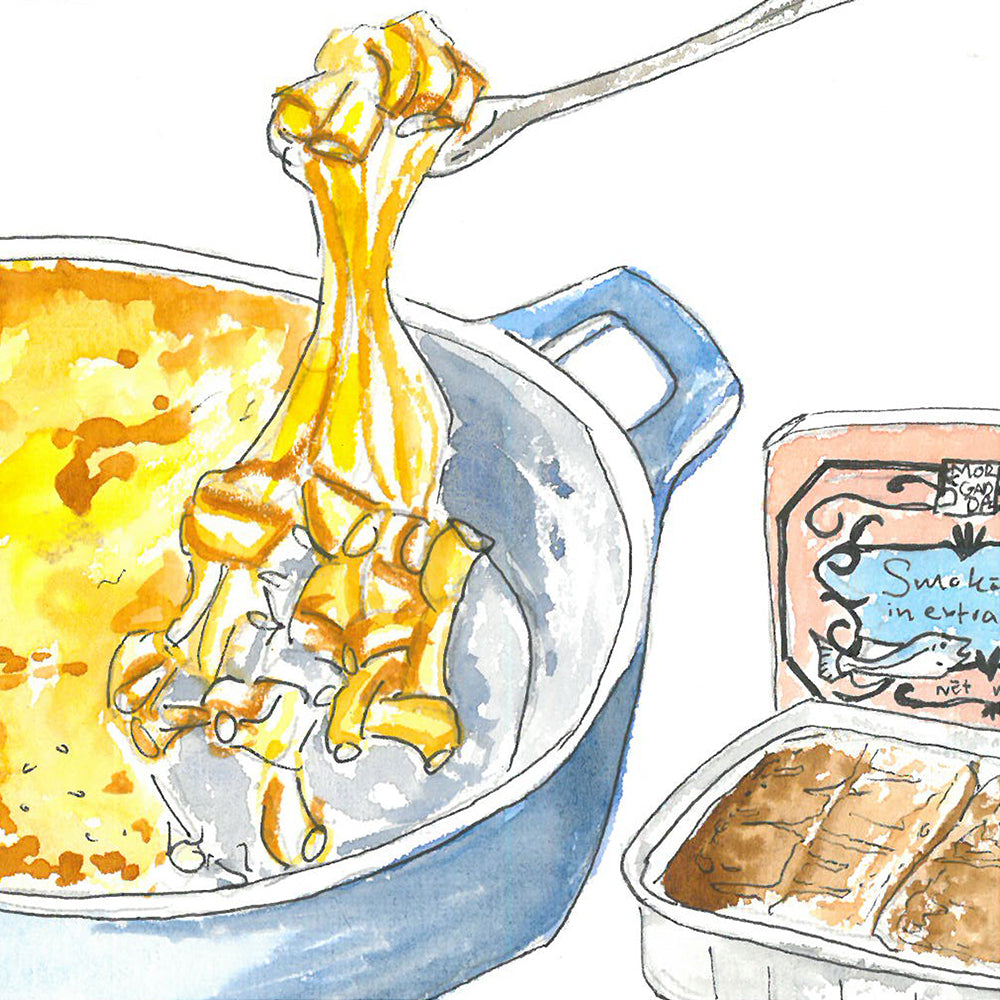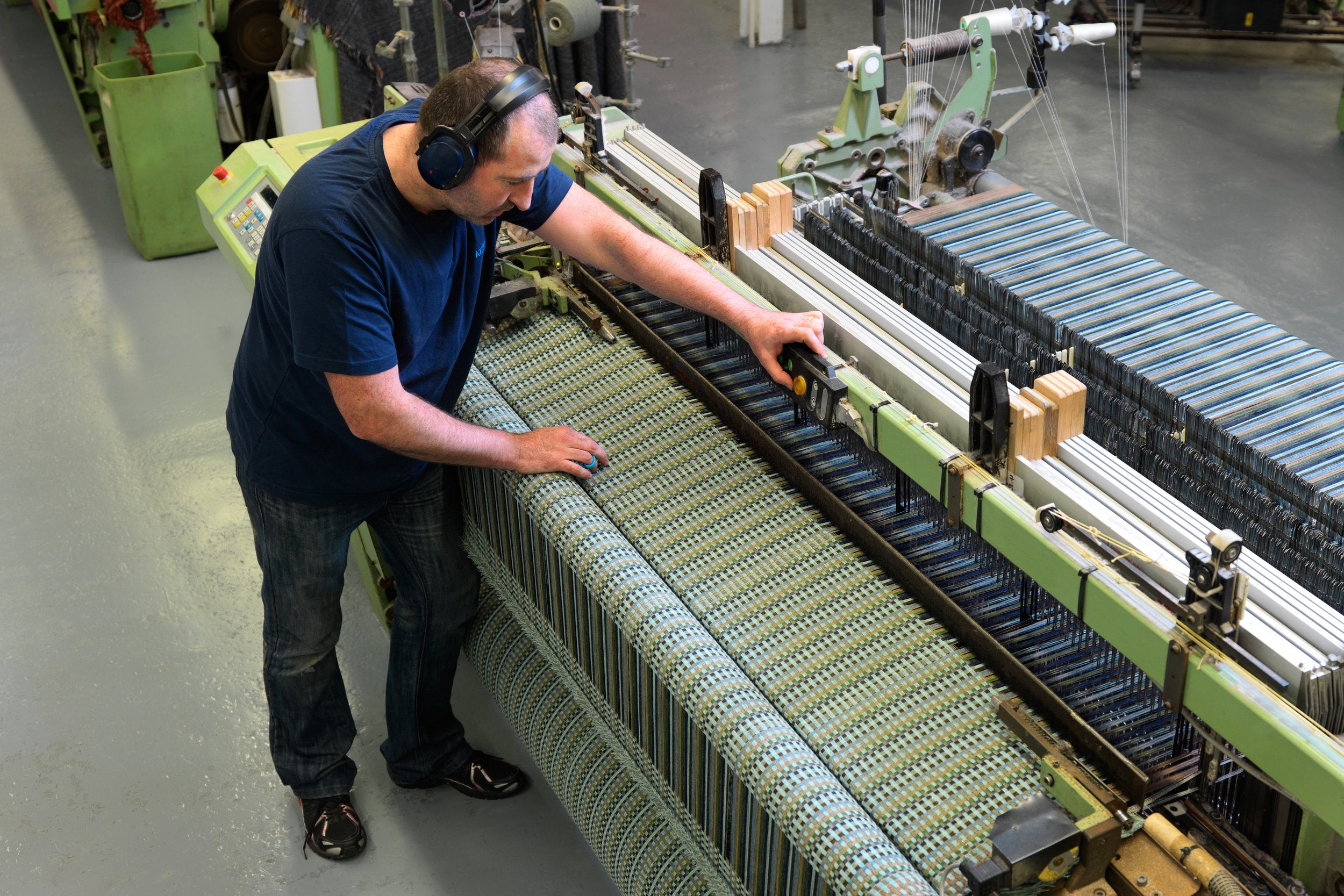The horizon’s soft hills roll away from you. The mounds catch the light that ripples along the surface, giving an aura that resembles halos. You can tell, just by looking at them, that the shape of these hills will not bend, break or move in any weather. They are spacious in heat, sheltering in the cold, and they tease your childlike want to be enveloped by them.
The designs and weaving patterns of McNutt scarves are intended to mirror the Donegal landscape, the jewel at the top of Ireland’s republic. The most northern county on the Island, Donegal sits outside the UK’s territory of Northern Ireland and is perched atop the southern counties like a tipped hat or, indeed, a crooked crown. Northern Ireland remains to this day a part of the United Kingdom, creating an interesting example of an island still divided by imperialism.
As one of England’s first colonies Ireland was under British rule for 700 years until 1922 when the contentious founding of Ireland as a free state came in the wake of the three-year Irish War of Independence. The Anglo-Irish Treaty that established Ireland’s sovereignty comprised 26 of the island’s 32 counties, with 6 northern counties opting out of the treaty to remain under English rule, a group that made up the majority of the Ulster province. This partition resulted in three free state counties in the province of Ulster outside of the UK: Cavan, Monaghan and Donegal.
This is relevant because McNutt of Donegal not only creates linen clothing to express the scenic beauty of their namesake county but because the Irish Linen industry itself is an iteration of Irish History that mirrors the heritage, struggle and prosperity of its nation. Before continuing I’d like to credit Vala Alta, an Irish linen handkerchief producer, with the in-depth lore of Irish Linen that is woven into every fabric of this article. They did an in-depth profile on the properties of linen as well as the linen trade in Ireland which you can find here.
A Cultural Pastime
Linen is among the most intimate textiles in the world. When worn it embraces your skin that little bit more, when weaved with it requires more care and, when treated well it will create a strong and long-lasting accessory. Not to mention its minimal impact means linen is both of the earth and for it. The process of growing flaxseed – what linen is made of – and then creating items with the textile is labour-intensive at every step of the process. It requires skill and precision, which means linen accessories were often reserved for wealthy and powerful figures. A fact that contrasts with the Irish.
A profoundly agricultural nation, Ireland was not a country overly preoccupied with the industry of crafts. The Irish climate ensured that the country could grow a select few crops well, including flaxseed. And so in the harvesting lulls that came between the cultivation of crops, an abundance of flaxseed often remained, creating a tradition of weaving and spinning in one's downtime. Ireland’s humidity also ensured when flax was weaved it resulted in a durable textile, as flax strengthens in the weaving process when damp. While some of a household’s capital was made by selling linen wares, most money was made in the trade of crops and labour, meaning that any abundance of linen was worn by every member of the family and extended friends. In short, most of the Irish wore linen because it was often just lying around, contrasting to cultures like the Egyptians who reserved linen for the likes of pharaohs.
A localised industry of linen trade existed but was almost always a supplement to a household’s income and would be a far cry from the hand-made or textile industries we know today. It wasn’t until the 17th century that Irish linen became a proper commercial commodity.
British occupation of Ireland began in the 12th century and with Protestantism being the dominant religion of the UK, pockets with high populations of protestants began to form in major cities, namely the north. This still plays a role in the Catholic & Protestant / nationalist & unionist divide today. Why is this relevant? Because in 1685 the Edict of Nantes – a law that protected French-Protestant toleration – was revoked, leading to a huge amount of French Protestants exiling to Northern Ireland. They brought with them a more evolved textile industry and within the space of twenty years, linen production in Ireland increased drastically, leading to a five-hundred per cent bump in linen exports. Through the Protestant exodus, the linen craft became an industry.
With that said linen was still considered a Protestant industry, or at least so much so that Protestants looked favourably on it in economic discourse. One of the key tactics of a long-standing occupier is to ensure the occupied’s economy never grows substantial enough to be threatening. This is ensured by strategic tariffs and supports used by the occupier to manipulate the economy and ultimately the wealth of the occupied. Crops, spirits, livestock, and anything that gave Ireland any kind of fiscal potential were squeezed by the British. Yet the Protestant community, particularly in the north, had livelihoods invested in the linen industry and so it was one of the few Irish exports that remained tariff-free. Wool as a textile was heavily tariffed and between this and the linen industry becoming regulated within Ireland, the eighteenth century saw linen production increase by over three thousand per cent. Census also show that around that time the Irish population increased by two million, something that historians credit to the linen industry. Prosperity, however, would not last.
Linen continued to grow and had even weathered the threat of the cotton industry and its massively advanced machinery that was incompatible with linen. Belfast had seen such a local boom of wealth due to linen that it had become colloquially known as Linenopolis. However, two major factors not only started to cripple the linen industry, but also Ireland itself: foreign wars, and the devastated Irish population count.
The foreign wars of the 1800s, particularly with British involvement, demanded a high amount of linen during wartime as it was a versatile fabric that could be used for anything from containers to armour. When the wars came to an end the linen demand plummeted, resulting in sharp booms and busts for the industry, making linen an unreliable industry during these times. This might be considered the largest economic loss for linen.
The cultural loss that hit Linen and greater Ireland is the island’s population being blitzed from eight million to five million inhabitants. The late eighteenth and nineteenth century saw the severe and disastrous failure of the potato crop, a national emergency that was further exacerbated by British rule retaining support and resources for high population and Protestant centres. History books know this time as The Famine or The Great Famine. The major urban areas struggled but survived, including Belfast which weathered the storm in no small part thanks to its linen industry. But the agricultural parts of the country – which was most of it – suffered greatly as their crops either failed or were depleted and repossessed by the ruling governments, leaving countless to die or emigrate. Colossal tragedy notwithstanding, the great irony of the decimated rural Irish and the surviving linen industry is that the linen craft had begun as a pastime of their agricultural workers, making their deaths not only mortally tragic but culturally as well.
Classic Craft, Modern Ireland
The twentieth century experienced a rapid rise of man-made fibres such as nylon and polyester. The popularity of cotton also skyrocketed as it had grown far cheaper and easier to produce. These two forces chipped away at the linen, resulting in a dwindling industry that lost over sixty per cent of its employees by the eighties.
Ireland itself had experienced a tumultuous twentieth century. The aforementioned Irish War of Independence came following a bloody revolt known as the 1916 Easter Rising, which was an event largely credited as the catalyst toward independence's final push, which eventually came at great compromise. The country did not settle quietly with the segregation of the northern six counties and the nation erupted into a civil war in 1922, lasting just under a year. Despite the relatively swift conflict, the Irish civil war fragmented society ideologically and economically, and for the rest of the twentieth century both the republic and Northern Ireland limped through national poverty and unresolved political tensions.
Yet the republic had independence and was free to shape its destiny. It developed stronger ties with greater Europe and eventually joined the European Communities, later becoming the EU. One minuscule pillar of those relationships was linen and flax exports. Linen became a more niche industry than in previous years but it, much like Ireland, endured. What sustained the industry was its exports to European countries like Italy and then West Germany, which had begun to rely on importing flaxseed from countries that weren’t within the Soviet Union, the continent’s largest flax producer. While other international linen industries were capable of creating high-quality goods, Ireland had long since had the infrastructure to grow and create some of the best linen in the world. Not to mention the reputation of Irish linen had long been established and so premium linen became synonymous with Ireland.
Up until contemporary times, Ireland has been patiently building a relatively stable economy and is enjoying a period of modest prosperity and good international relations that hasn’t ever existed within Ireland before. Irish linen mirrors that. Globalisation gave Irish linen’s reputation more of a push and modern values provided further appreciation and respect for the craft. Modernity has seen a greater emphasis placed on fair-trade and sustainable fashion while also putting a high price on heritage and authenticity, and within the fashion world, few things check all the boxes like Irish linen.
But to know such things is different than to feel. McNutt of Donegal, symbolic of its industry in general, has quietly persevered while still producing uncompromisingly beautiful scarves. Crafts that still tell a story of Irish geography and history. Donegal is north of the south, and west of the north, inhabiting a space remote enough to feel separate from its northern neighbours and the rest of the republic. McNutt’s linen is meticulously designed to mirror this spiritual bardo and to wear their scarves, wherever they’re worn, is to be embraced by Donegal and Ireland.



